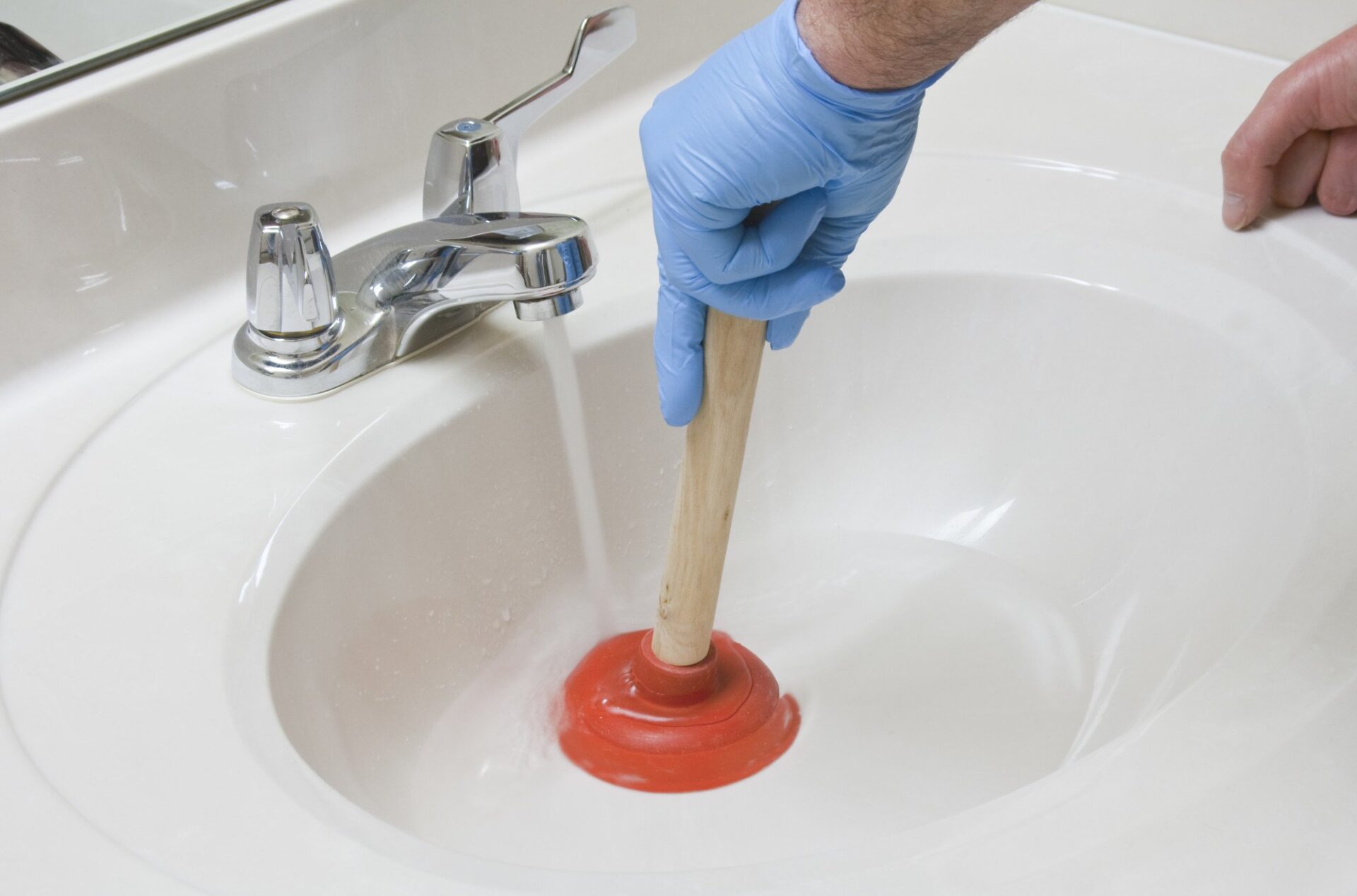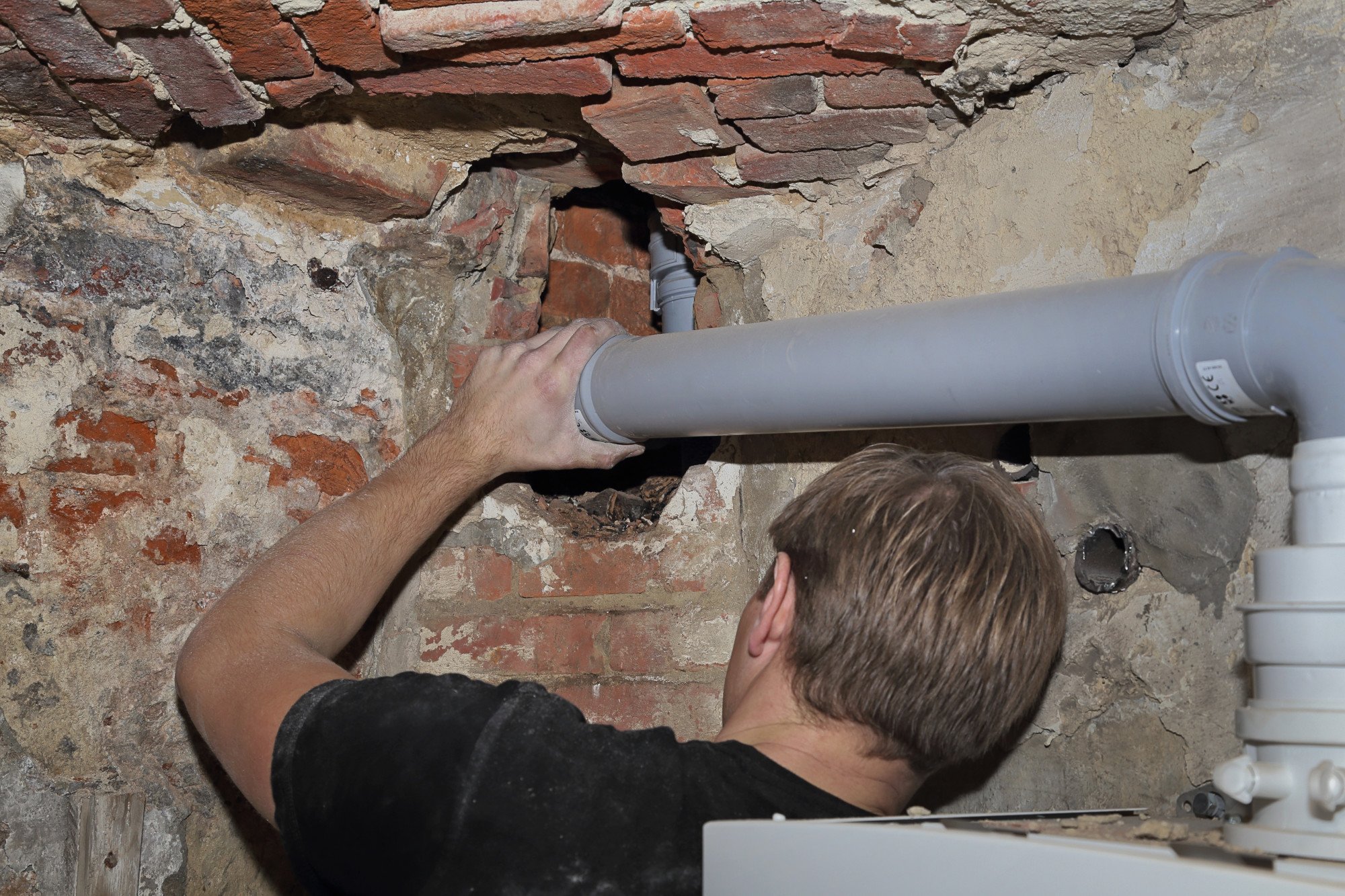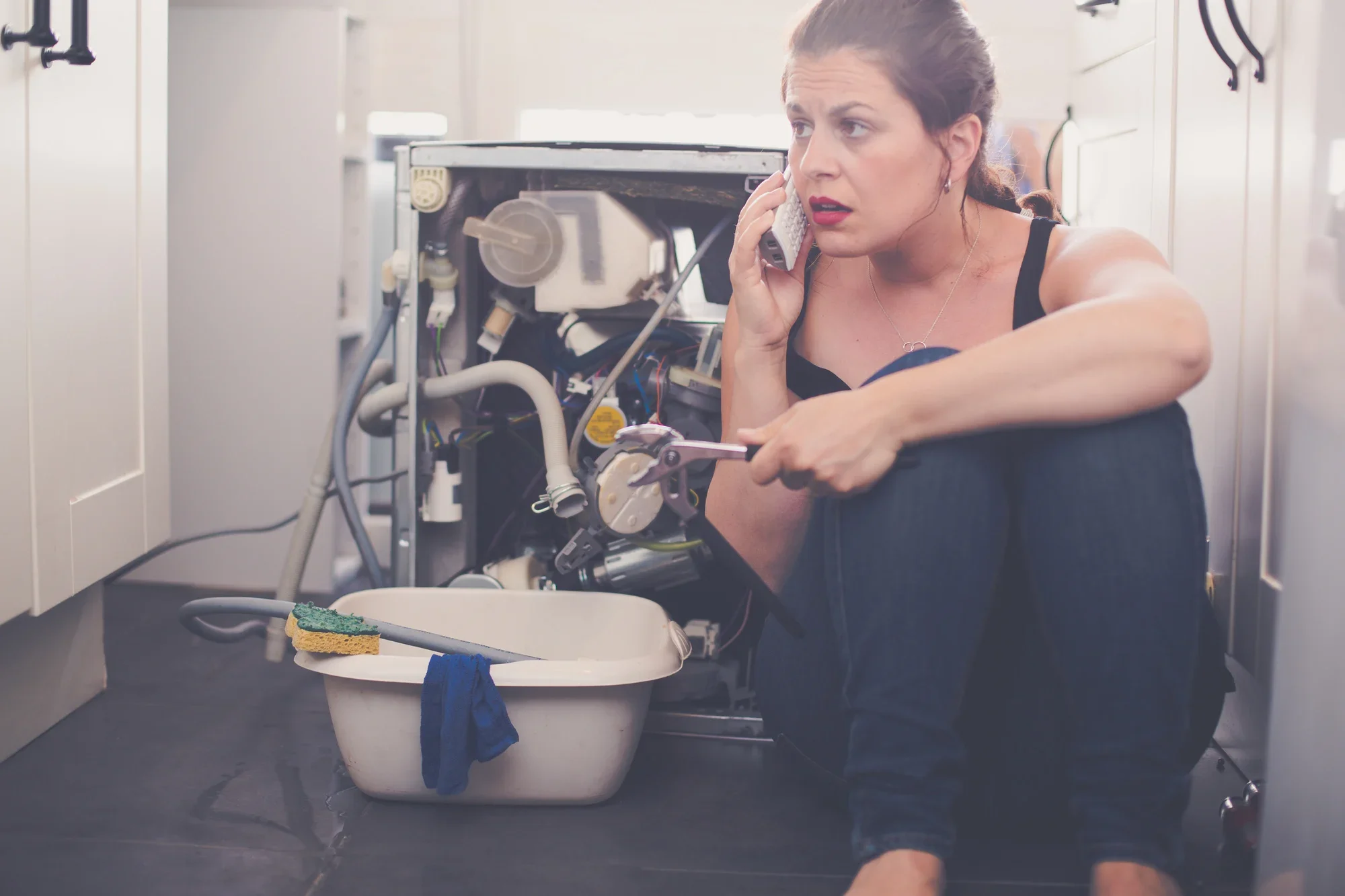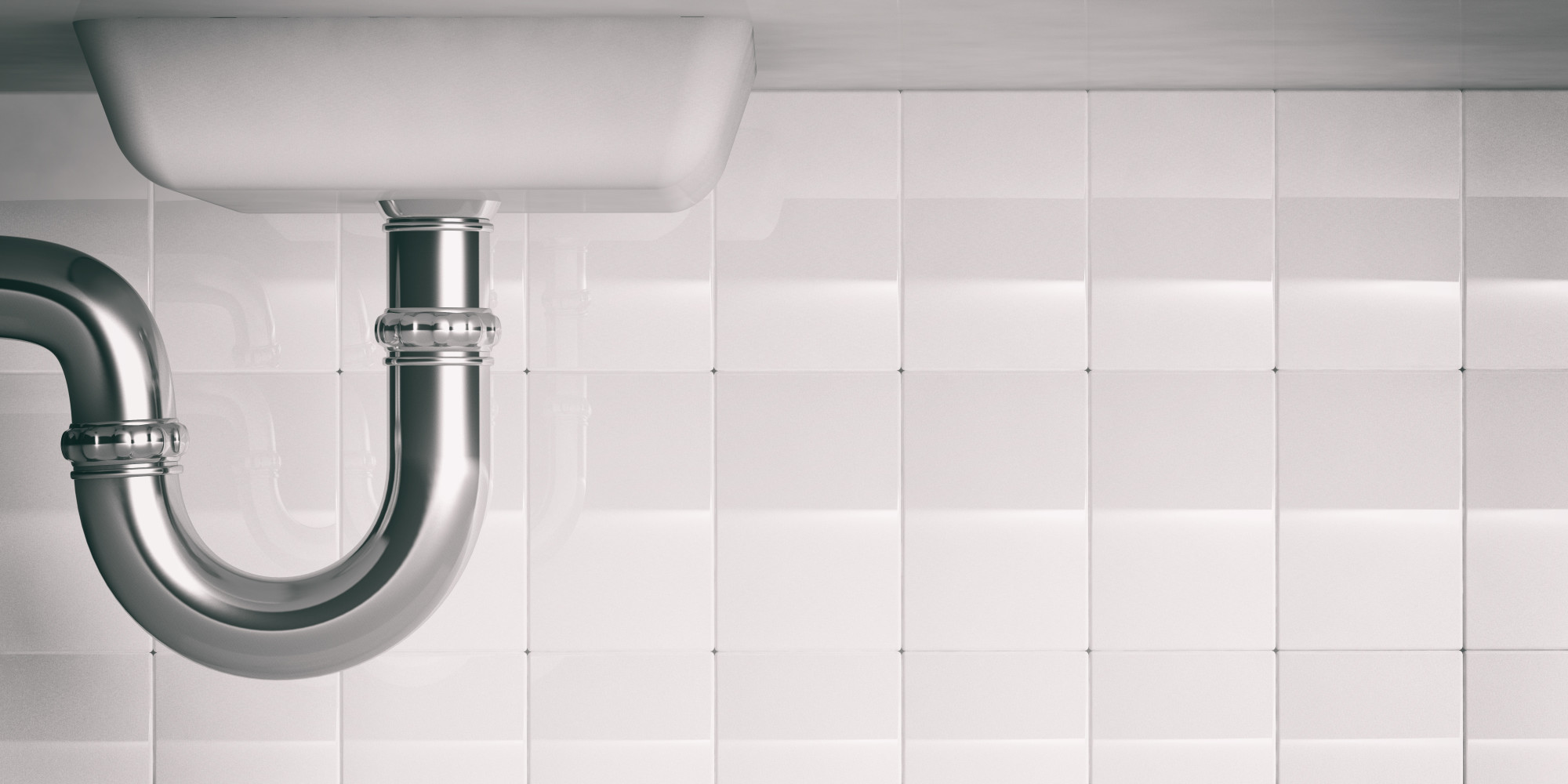It’s the big day of the party you’ve planned for weeks and are hosting at home. You’ve invited a few friends and family over and prepared plenty of sumptuous snacks and a huge meal. Now, you’re ready for a relaxing hot shower after all that work.
So, you head to the bathroom and jump into the shower. Only after a few minutes do you notice it: water is pooling by your feet, not draining away!
Don’t panic yet; you may still have time to learn how to unclog a drain safely and save the day.
This guide rounds up the tactics you can follow to help you deal with plumbing clogs, so read on.
Ensure It’s Not an Emergency
First, ensure you’re not dealing with a severe plumbing problem, such as a sewage backup.
Please never touch wastewater with bare hands, especially if you think it’s sewage. It may sound obvious, but panic may cause a person to reach out instinctively to try and unclog a drain’s opening.
Domestic or household sewage contains pathogens that cause infectious diseases. From skin infections to diarrhea, these are all things you can get from sewage exposure.
If you’re dealing with sewage backup, you’ll likely notice the following:
- Brown or gray water backing up sinks or toilets
- Overflowing toilet water
- Extremely foul odors
- Water doesn’t drain and stays in the sink
- Multiple affected plumbing components
If you experience any of the above, you need emergency plumbing services. You likely have a clogged, damaged, or collapsed main sewer line. These problems require professional diagnosis and repairs and shouldn’t be a DIY project.
But if it’s only one drain acting up (and this is the first time), then you’re good to go with DIY.
Gear Up
You may not have to deal with sewage, but you’ll handle dirty water and plumbing parts that may contain germs. For example, experts say Salmonella bacteria can stay on the underside of toilet rims for up to 50 days!
So, don durable rubber gloves, a face mask, protective eyewear, and old clothes. These can help reduce risks of exposure through skin contact and inhalation. That last one can happen if you flush the toilet, which can spew out germ-containing particles.
Bring Out the Plunger
Hopefully, you have a flange plunger at home, but if not, you can get it from a nearby hardware store or home center. Consider getting at least three: one for sinks, another for toilets, and the third for floor or tub drains. This way, you don’t have to use the one you dunked into a clogged toilet on a blocked kitchen sink.
A flange plunger is best for all-around use since it has two cups, with a tinier one folding inside a larger one. The interior cup folds out and fits into tighter, narrower drain openings.
How to Unclog a Sink or Tub Drain With a Plunger
Position the plunger’s cup over the clogged drain. If you’re using a flange plunger, use its exterior cup.
There should be enough water to submerge the plunger’s cup, which helps create a better seal. If not, run the faucet until the water level reaches the area below where the cup meets the handle.
Give the plunger’s handle a slight push to release air inside the cup. Avoid putting too much force on it, as this can lead to you getting sprayed with dirty, possibly germy water.
Next, test the seal by gently pushing the handle to one side. If you’ve created a good seal, the plunger should stay upright.
Now, you’re ready to push the plunger down with more force. Give it about 15 to 20 thrusts, with a one-second pause in between. Pausing gives the cup enough time to pop back up.
After this, slowly remove the plunger; the water should flow down the drain if you have dislodged the clog. If not, give it another 15 to 20 thrusts.
How to Unclog a Toilet Drain With a Plunger
If you’re using a flange plunger, extend its inner flap out. You need to work this into the hole at the bottom of the toilet bowl. If you’re using a standard plunger, position the cup over this hole, too.
For better results, ensure the bowl is at least half-full. You can add more water if needed.
Once you’ve created a seal, push the plunger 15 to 20 times. Don’t forget to pause for about one second between each thrust.
After that, slowly remove the plunger and flush the toilet. You can also fill a bucket with water and pour it quickly but carefully into the bowl. This may carry more force than a standard flush, helping push a clog that’s not fully dislodged.
If your plunging worked, the toilet bowl water should flush and recede as it used to. But if it doesn’t, try giving it another round of thrusts.
Use a Drain Snake
If your plunger doesn’t do the trick, a drain snake, also known as a plumber’s auger, might.
You can also get one specifically made for toilets, called a toilet auger. This has a rubber sleeve that keeps the metal cable from scratching the bowl’s porcelain.
A plumber’s snake has a slender, flexible auger (spiral-shaped drill bit). This tip, which can be a blade- or corkscrew-type, can dislodge or shred more severe drain clogs.
The auger attaches to a long, coiled metal cable connected and controlled by a crank. Some are manual (turned by hand), others have a battery-or electricity-powered motor. Like plungers, you can buy one from your neighborhood hardware store or home center.
Unclogging Sink Drains With a Snake
If you’re unclogging a sink drain, remove the P-trap first. In doing so, debris and water may fall, so prepare a bucket to catch them and lay out some old towels under the sink. You should also grab some paper towels and a trash bag for the clogs.
Once you’ve removed the P-shaped pipe, insert the auger head into the drain line. Once inside, slowly crank the tool to feed more cable into the drain. Keep doing this until the tip stops and meets resistance.
That resistance indicates you’ve reached a clog. Engage the snake’s lock to keep the cable in place and rotate it two to three times to dislodge and snag the clog.
Disengage the auger’s lock and slowly crank the cable back. Use a paper towel to remove the clog from the tip and put it straight into the trash bag. Repeat the steps until you stop feeling resistance or run out of cable.
Reattach the P-trap and open a tap to test the water flow into the drain. If it drains faster, then you did an excellent job.
Using a Snake on Other Drains
The steps are the same except for the part where you insert the snake’s head.
For a tub drain, you can use its overflow portion. This is the opening found a few inches under your tub’s rim.
If dealing with a shower drain clog, pry loose its drain cover or screen first. You can use a flat-head screwdriver to pop it out. Then, switch to a plug wrench to remove the drain itself.
For toilets, maneuver the snake’s tip into the hole at the bottom of the bowl.
Try Enzymatic Cleaners
Enzymes are bacteria that break down and digest molecules in organic matter. They’re non-chemicals and are safe for most pipe types, so long as you follow the instructions. And because they’re non-chemicals, they’re eco-friendlier than commercial clog removers.
The chief drawback to enzymatic cleaners is that they take about six hours to complete their job. That might be a problem if you’re having visitors and have only one toilet. But if you have another bathroom or sink they can use, consider trying this green product.
Call a Professional Plumber
If none of the strategies above work on your clogged drains, your next best step is to call a licensed plumber. With their high-tech tools, they can determine what’s wrong with your plumbing system. They can then use state-of-the-art equipment, such as hydro-jetters, to clear clogs away.
You can also expect reliable plumbers to provide free on-site quotes. This lets them see your plumbing woes first-hand and give you an accurate estimate.
And if you agree, you can have the plumbers fix your problems without having to schedule for another day. Their service vans already have the tools and parts needed for most common jobs.
Some of the most dependable plumbers also offer 24/7 emergency services. So whether it’s a holiday, a weekend, or the middle of the night, you can rely on them for help.
That’s How to Unclog a Drain Safely
Now you know how to unclog a drain using a plunger, snake, or enzymatic cleaner. If used properly, they’re all safer options than chemical drain cleaners. They don’t always work, though, especially not against severe clogs in sewer lines.
So, if you’ve tried all our tips and still have clogged drains or toilets, it’s time to call us.
At Master Plumbing, our experts can come to your home anytime you need us for plumbing issues. Ring us up now, and we’ll gladly provide an in-home estimate to fix your clogged drains!



